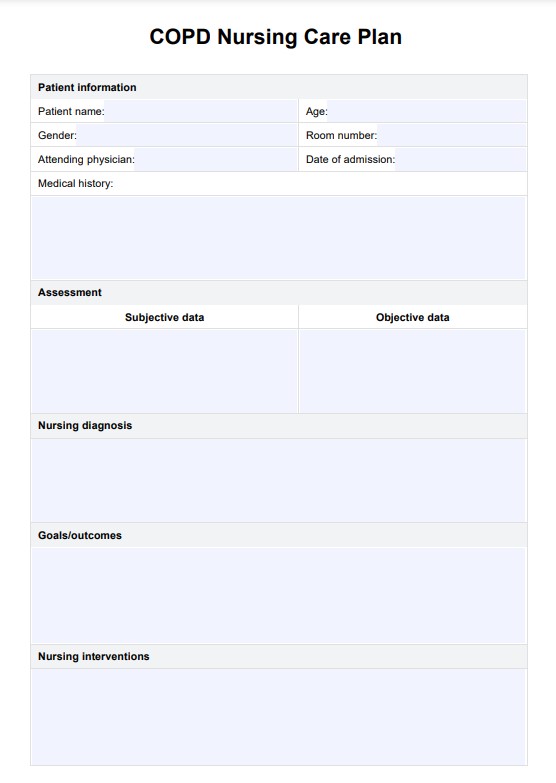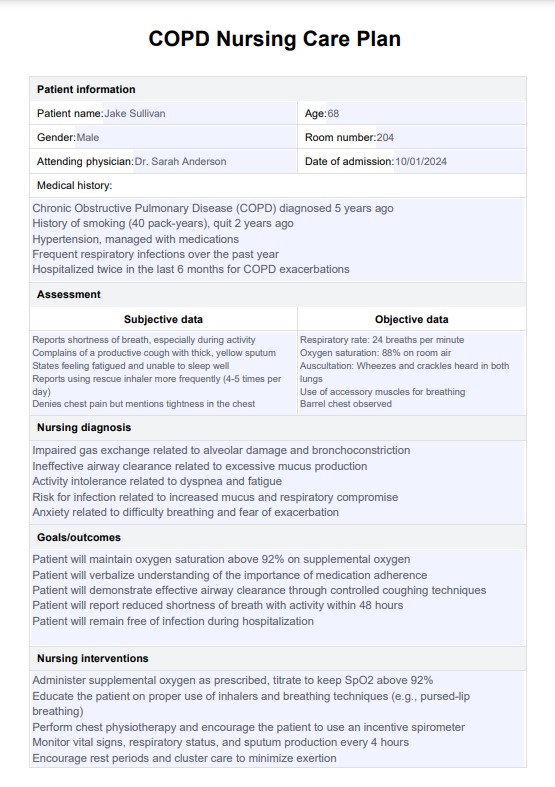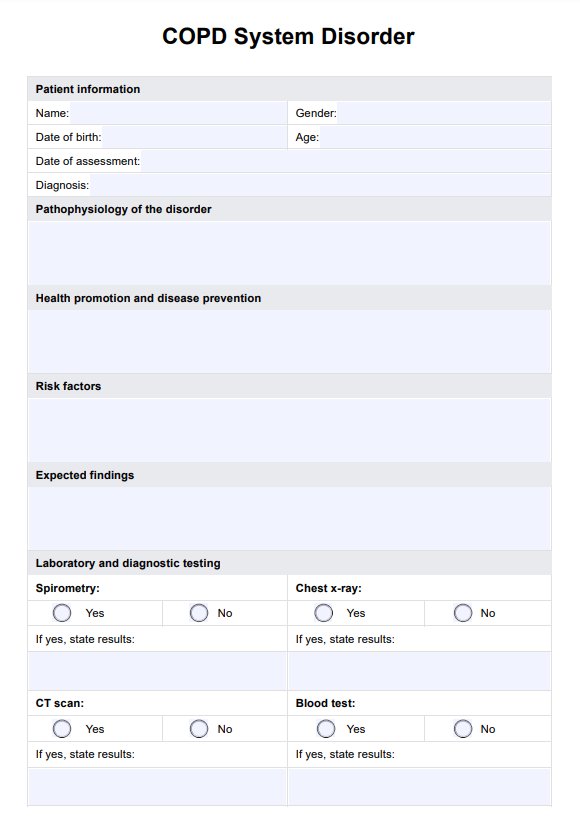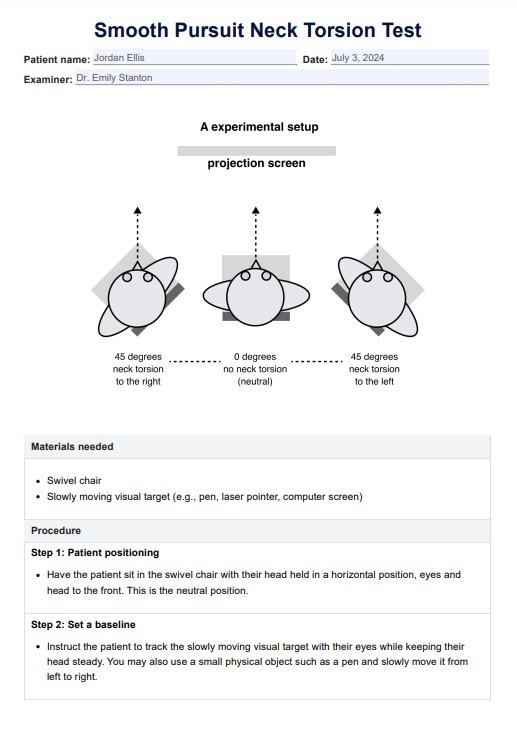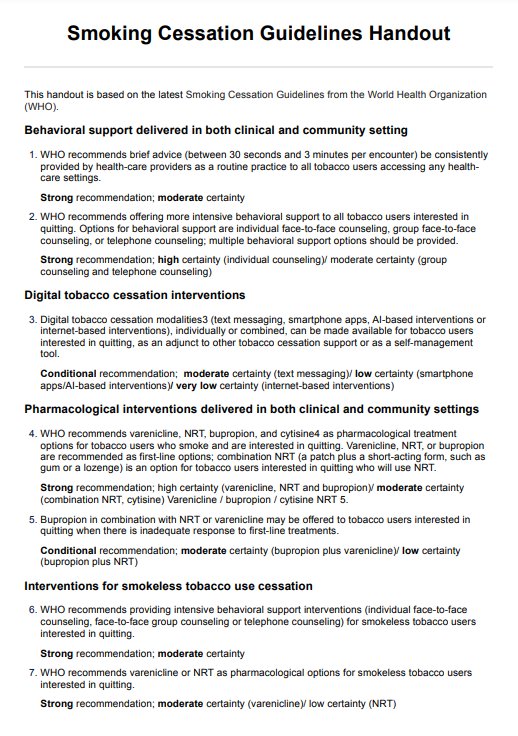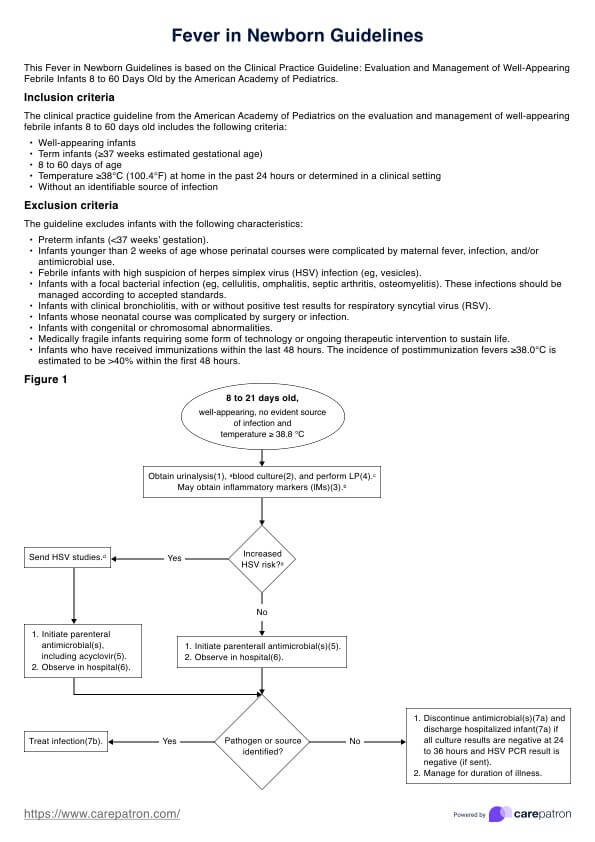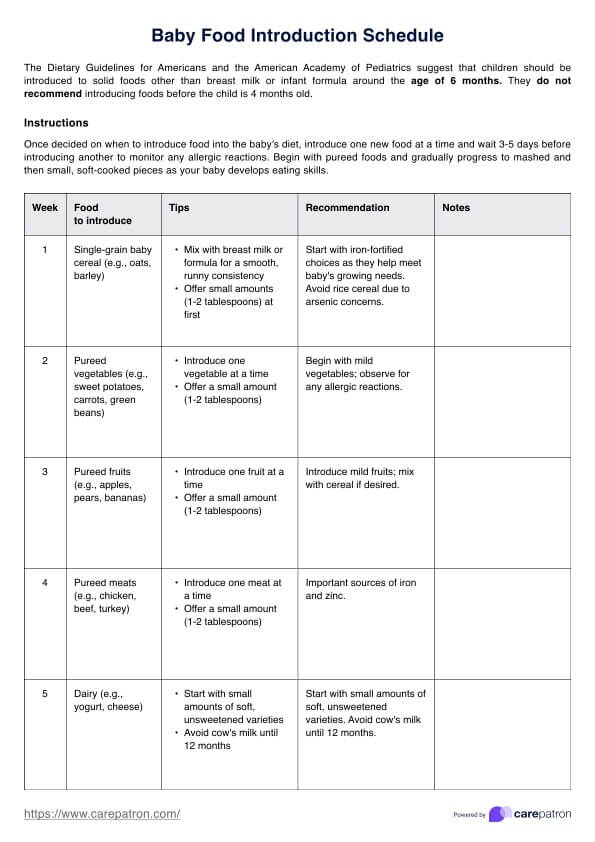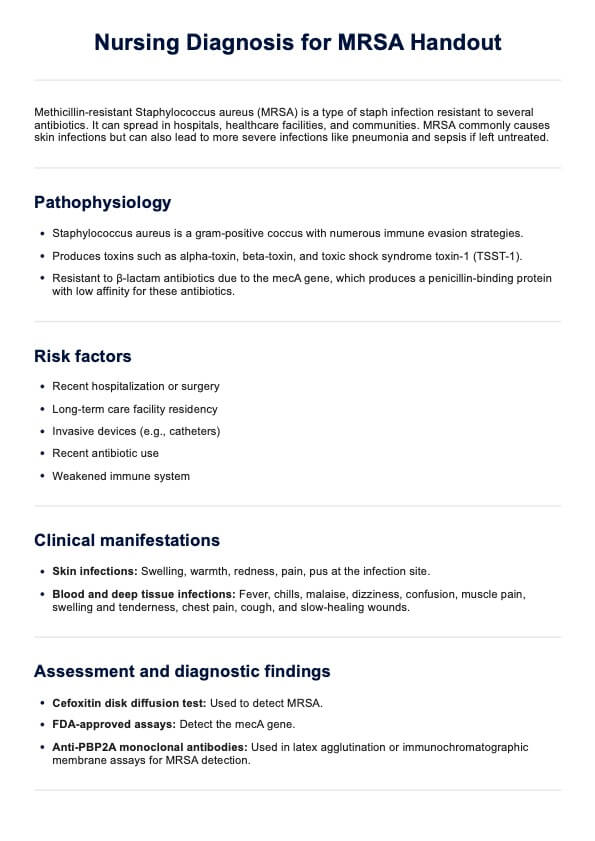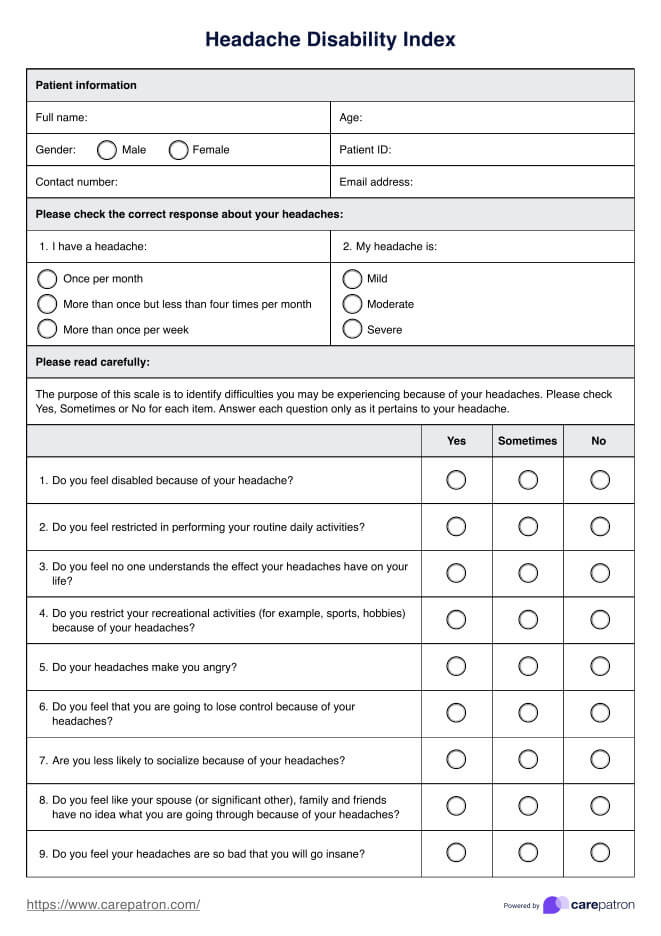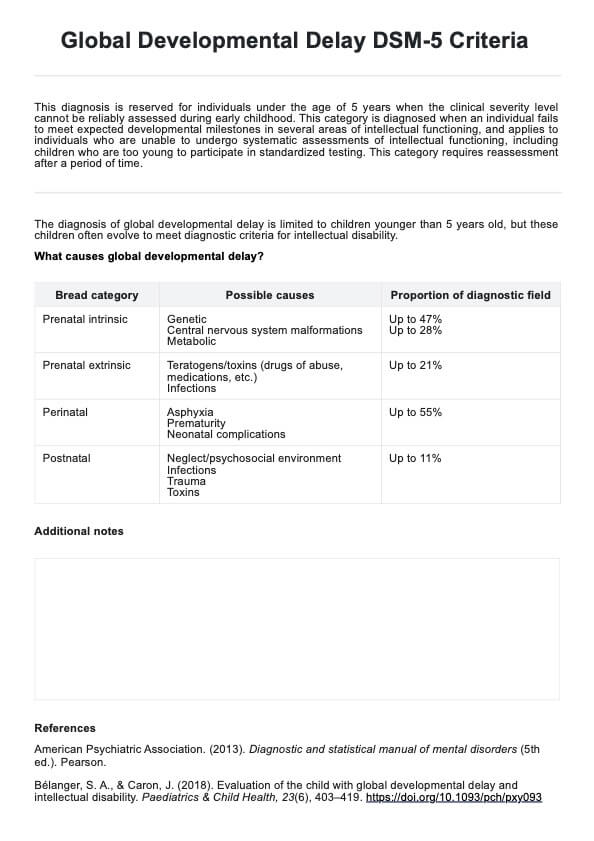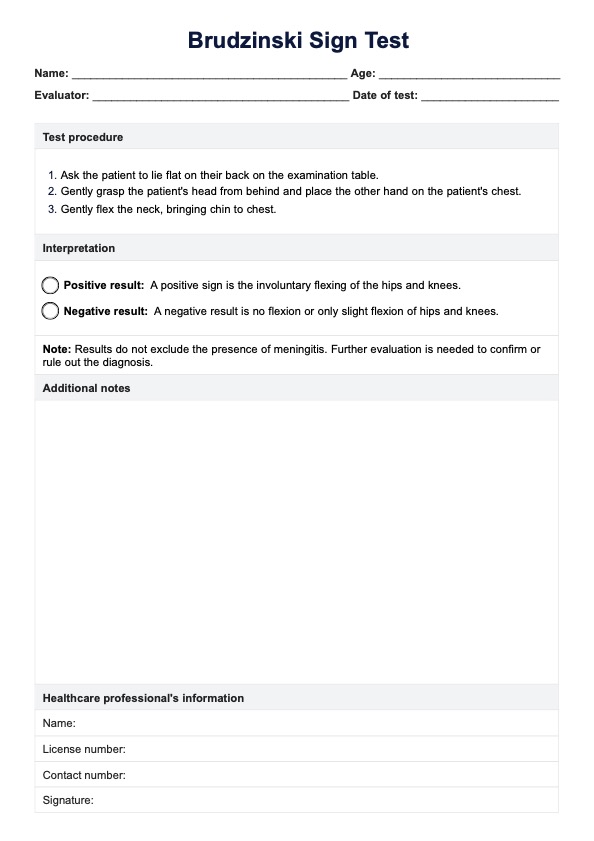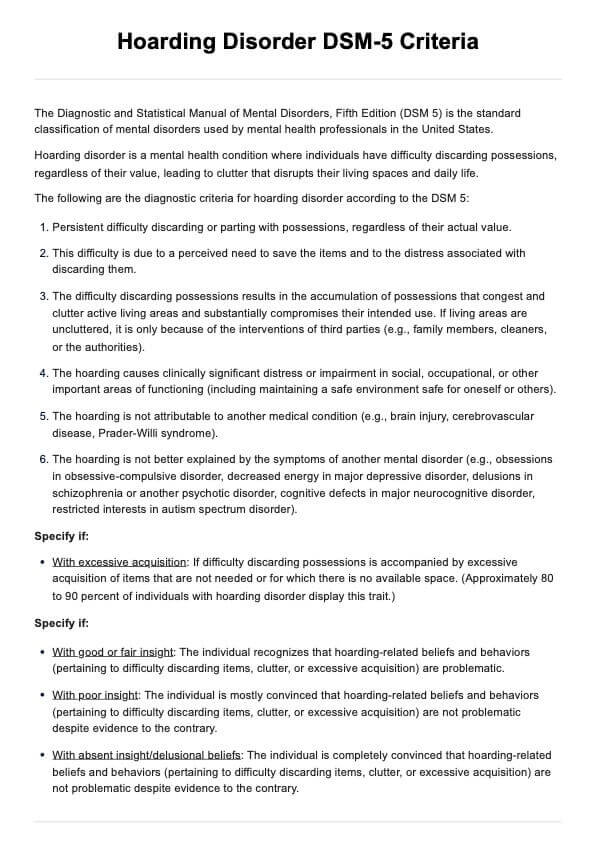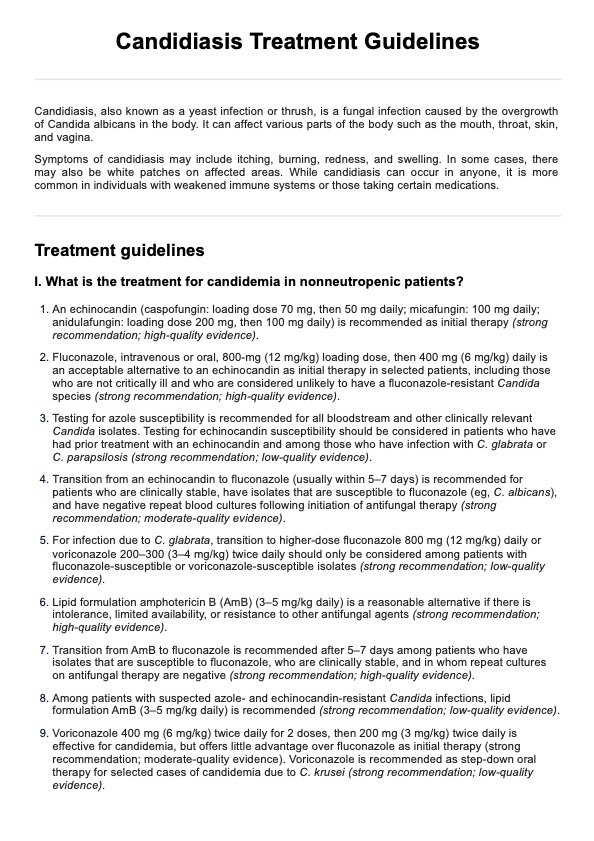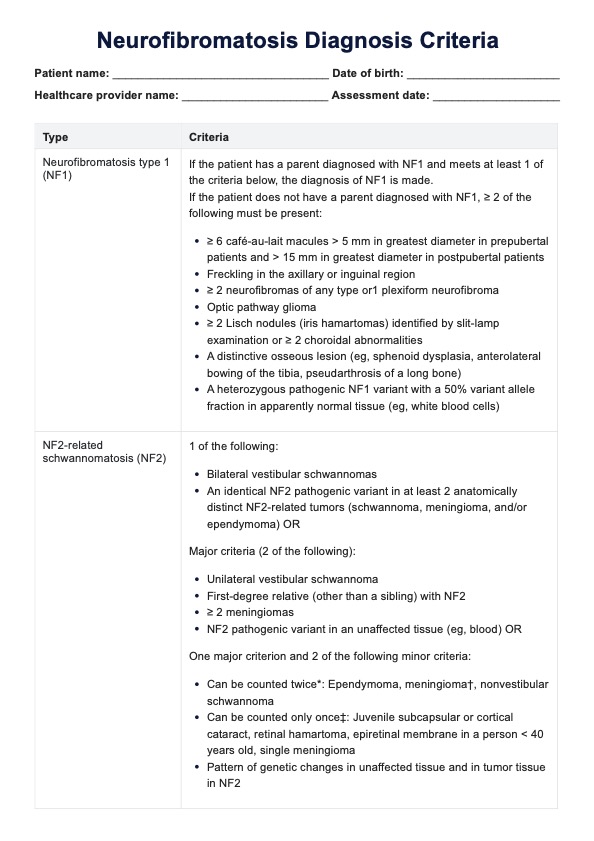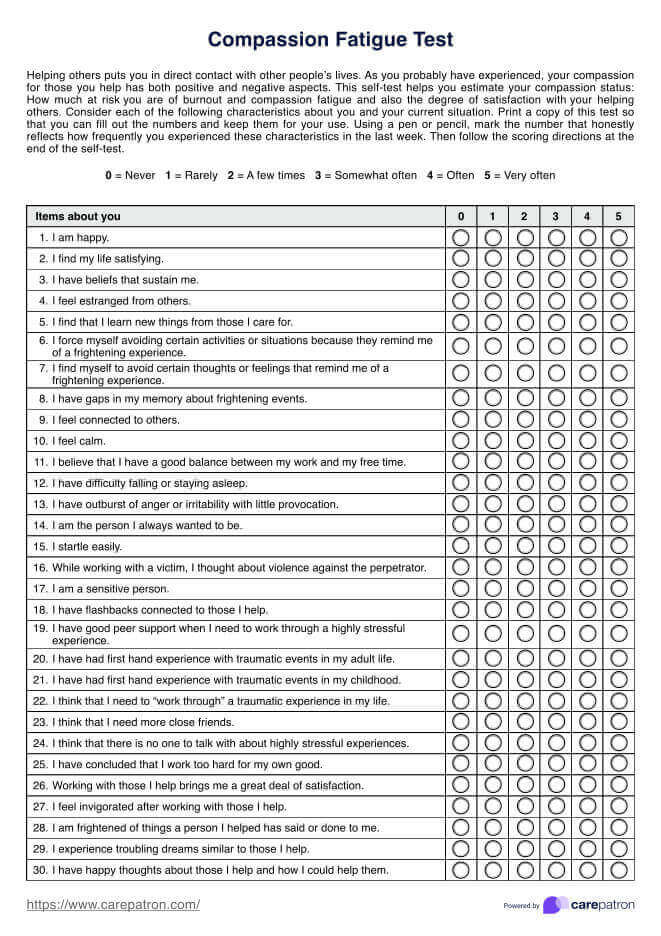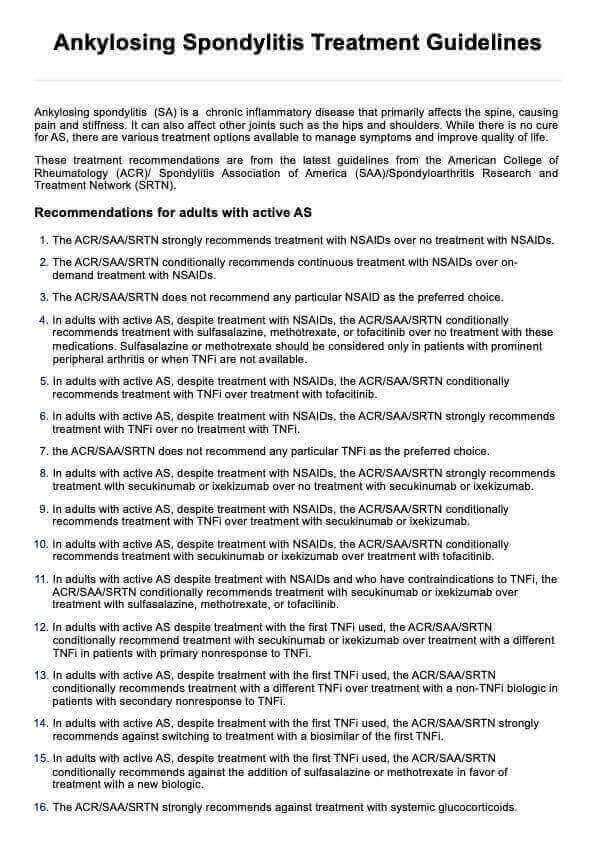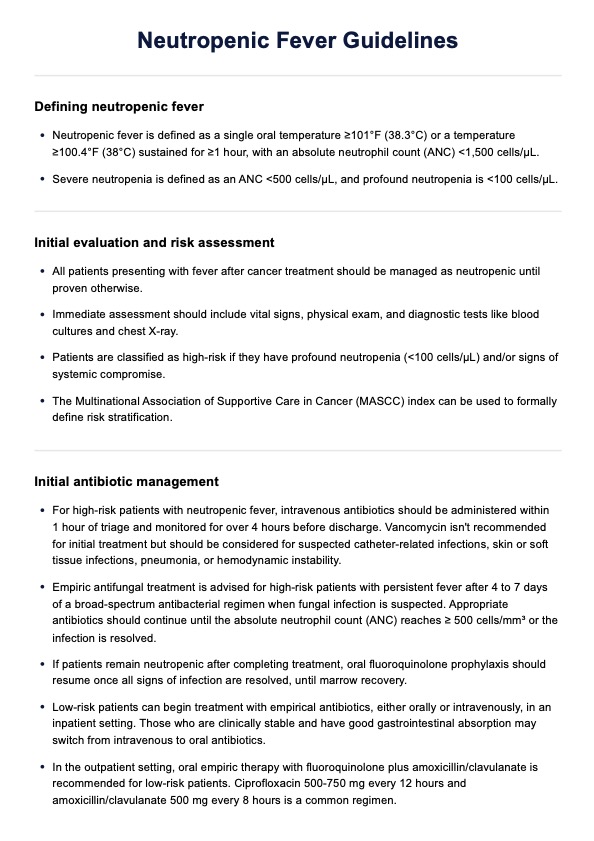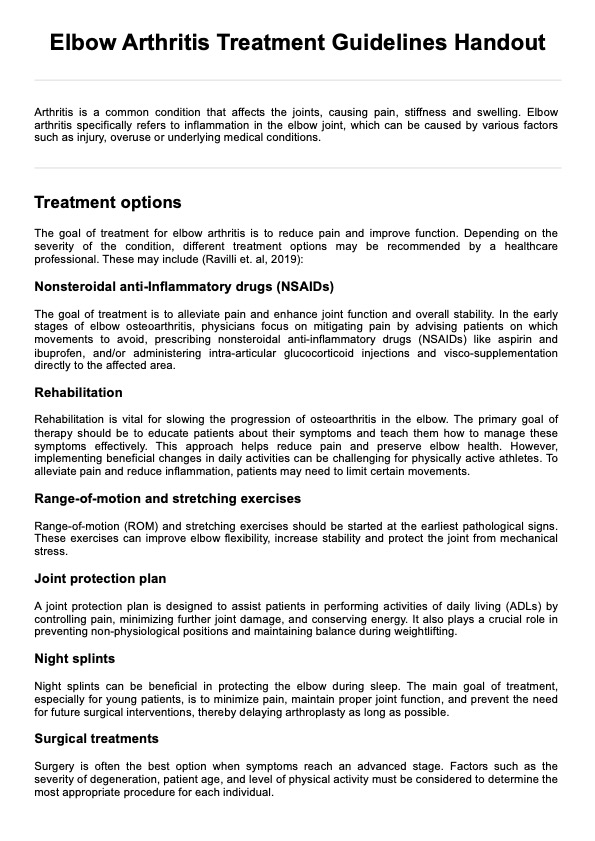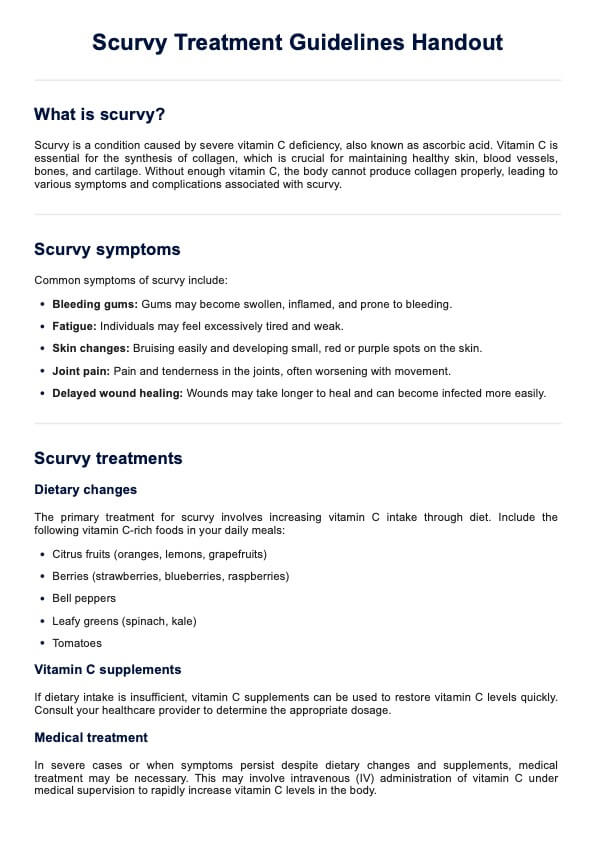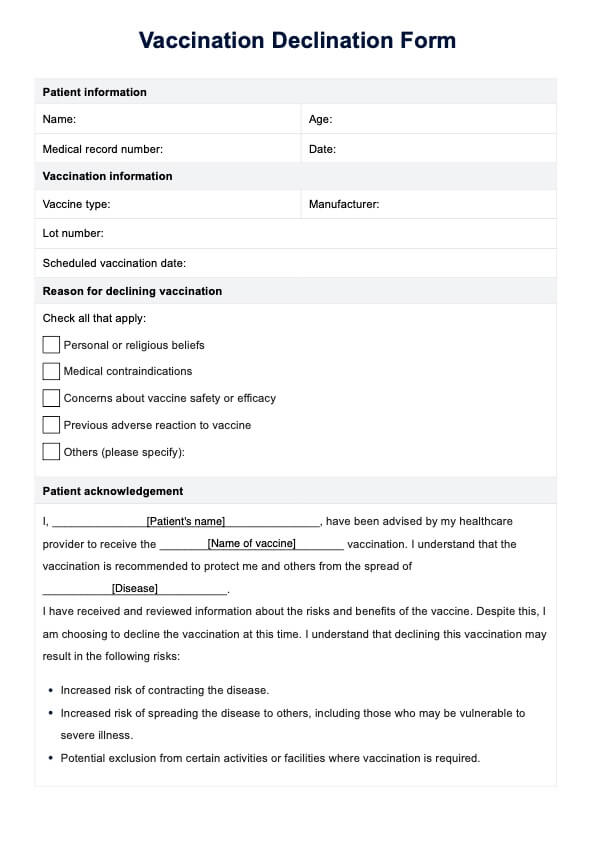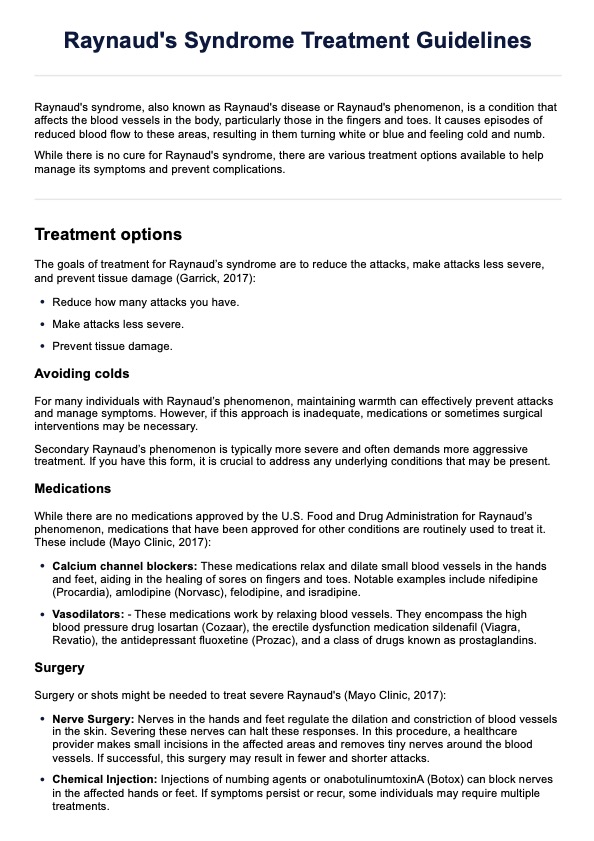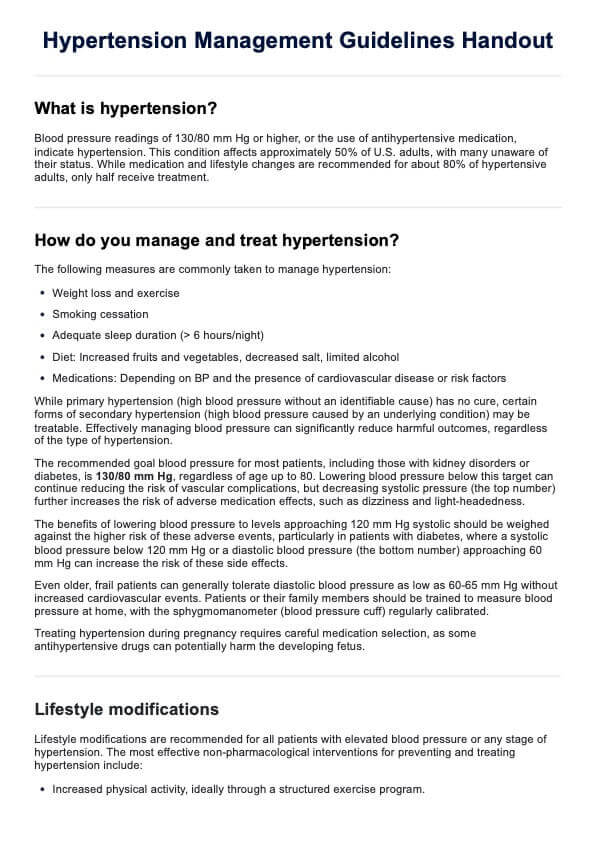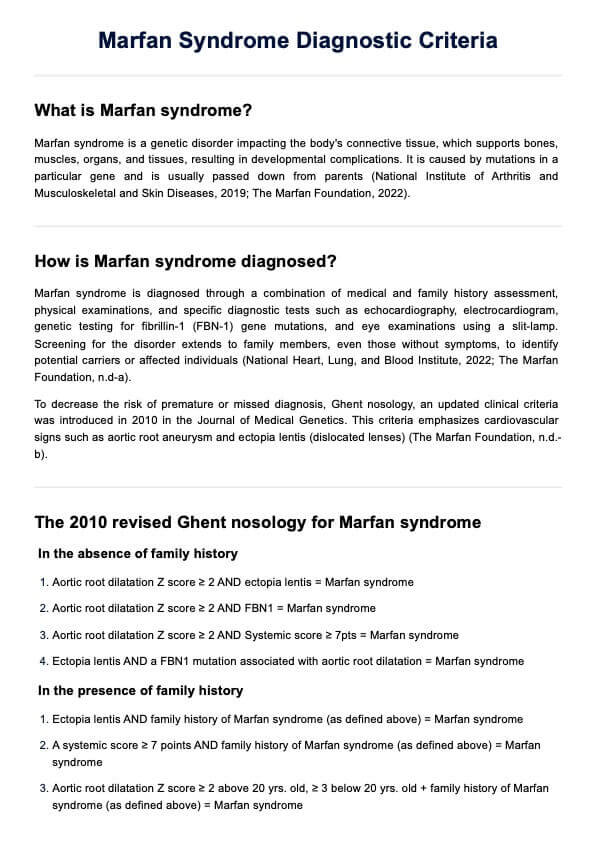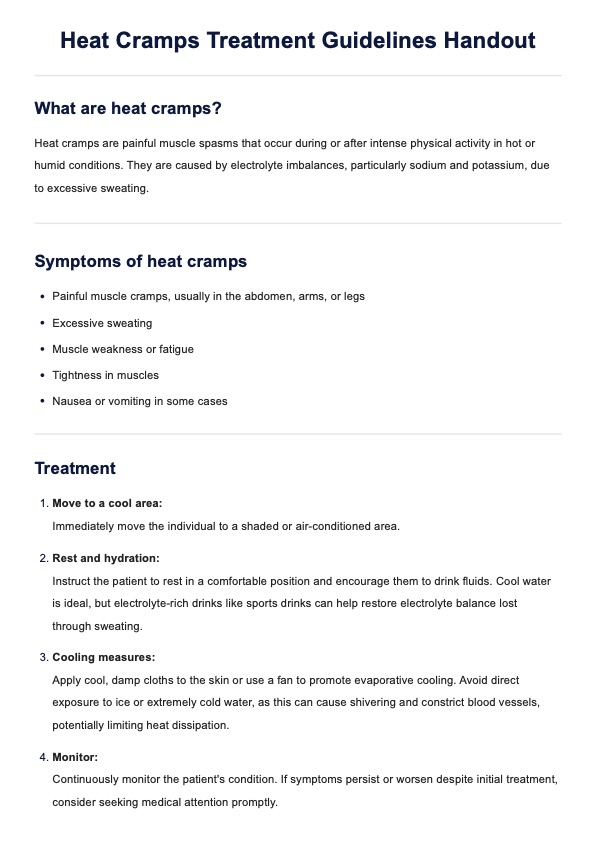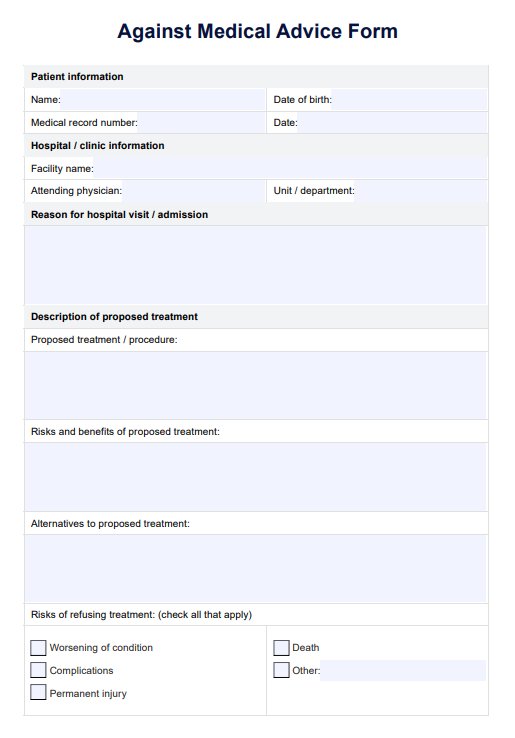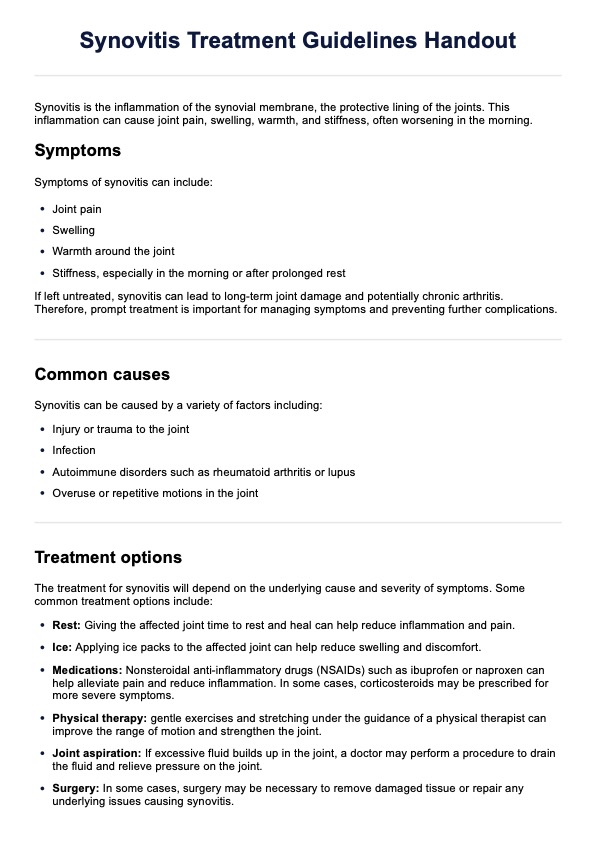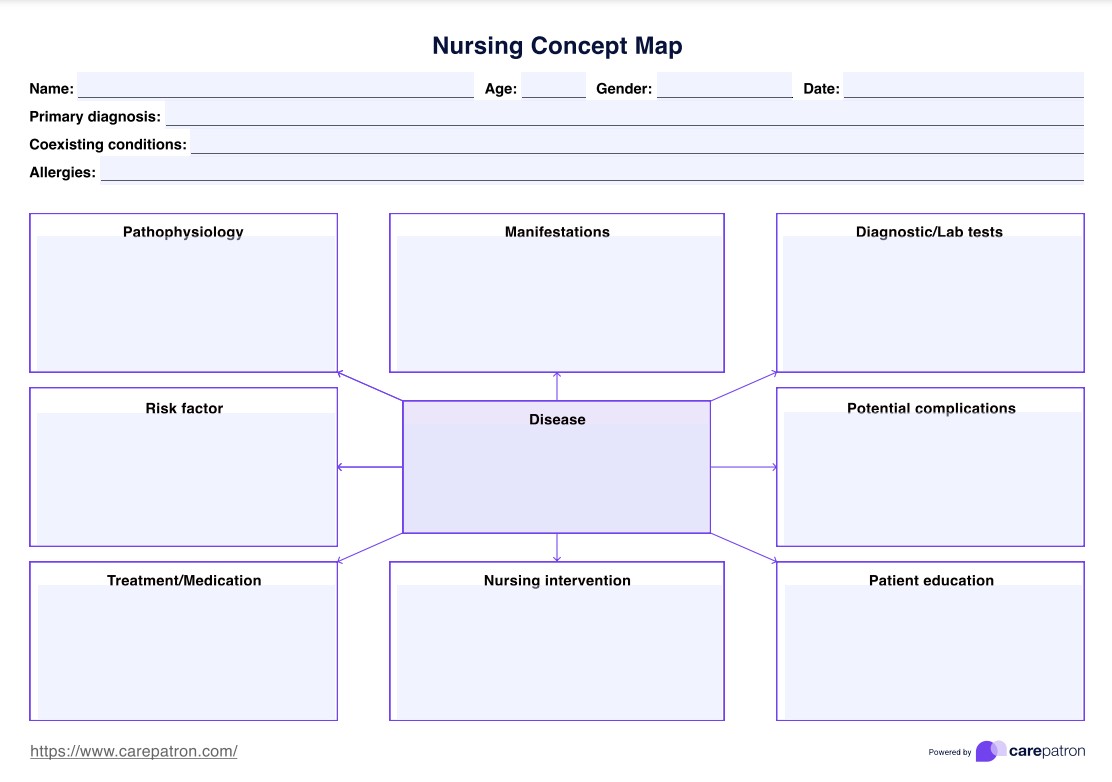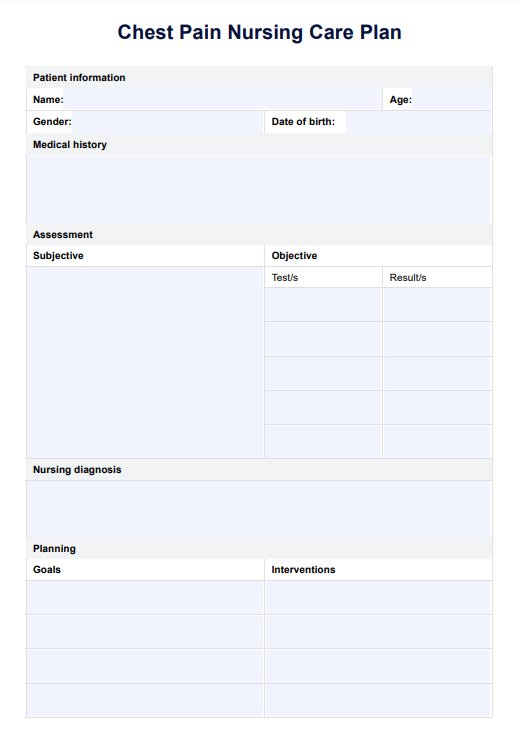COPD Nursing Care Plan
Discover the ins and outs of what to include in your COPD Nursing Care Plan Template. Download a free template and example here.


What is a COPD Nursing Care Plan Template?
A COPD nursing care plan is crucial for managing chronic obstructive pulmonary disease (COPD), which includes conditions like chronic bronchitis and emphysema. COPD leads to reduced lung function due to chronic inflammation, making breathing difficult. The primary goal of a nursing care plan for COPD is to maintain airway patency, improve oxygen saturation, and prevent respiratory infections and exacerbations. Key interventions involve monitoring pulmonary function tests, using noninvasive positive pressure ventilation, and teaching pursed lip breathing to ease respiratory distress.
Assessing the patient’s lung status, including oxygen saturation levels and pulmonary function tests, is vital. Nurses should also educate patients on smoking cessation, a critical step in halting disease progression. Managing symptoms like dyspnea and cough can include techniques like pursed lip breathing, encouraging proper hydration, and promoting noninvasive positive pressure ventilation when necessary.
Effective nursing care plans address not only physical but also psychosocial aspects, emphasizing lifestyle changes like smoking cessation and encouraging patient involvement in managing their obstructive pulmonary disease (COPD). The nurse's role is essential in reducing disease progression, improving quality of life, and preventing complications (Vera, 2023).
COPD Nursing Care Plan Template
COPD Nursing Care Plan Example
How does COPD Nursing Care Plan Template work?
A COPD nursing care plan is essential in managing chronic obstructive lung disease. It ensures personalized care, improves respiratory function, and guides healthcare professionals in preventing COPD exacerbations. The plan assists in monitoring vital signs, oxygen therapy, and nursing diagnoses while promoting optimal outcomes for COPD patients. Here is how to use the template effectively:
Step 1: Gather patient information
Complete the patient’s medical history, including details on smoking history, chronic respiratory conditions, and medications. This helps track risk factors and develop appropriate interventions for chronic obstructive lung disease.
Step 2: Conduct an assessment
Perform a nursing assessment, recording both subjective data (patient-reported symptoms such as dyspnea) and objective data (e.g., respiratory rate, lung sounds, and oxygen saturation levels). This helps evaluate the patient's respiratory status and detect early signs of airway obstruction.
Step 3: Define nursing diagnoses
Based on the assessment, identify key nursing diagnoses, such as ineffective airway clearance or impaired gas exchange. These diagnoses inform the care plan and guide healthcare professionals in addressing COPD exacerbations or acute respiratory failure if needed.
Step 4: Outline nursing interventions
Document relevant nursing interventions to address the patient’s respiratory needs, such as promoting airway clearance, administering medications, and encouraging breathing exercises. Healthcare professionals should also administer supplemental oxygen as needed to improve gas exchange.
Step 5: Evaluate and update the plan
Continuously evaluate the effectiveness of the care plan, noting any improvements in the patient's respiratory function or oxygen saturation levels. Adjust the interventions to address ongoing challenges or changes in the patient’s condition.
When would you use this template?
A COPD nursing care plan is used in various situations involving individuals diagnosed with COPD. The plan is continuously adapted and updated based on the patient's changing needs, response to treatment, and disease progression. Some key scenarios where a COPD nursing care plan is implemented include:
During diagnosis
When a patient is newly diagnosed with COPD, a care plan is created to establish an initial baseline, educate the patient about the condition, and initiate appropriate interventions.
Hospitalization
During hospital admissions due to COPD exacerbations or related complications, a care plan is developed to manage acute symptoms, facilitate recovery, and plan for post-discharge care.
Primary care setting
A care plan is used in routine primary care visits, especially for patients with moderate to severe COPD, to assess symptoms, adjust medications, monitor disease progression, and provide ongoing support.
Home care
A tailored care plan is essential for patients receiving care at home to manage symptoms, promote self-care, and prevent exacerbations. This includes providing education to patients and caregivers.
Palliative care
In advanced stages of COPD or in cases where the disease significantly impacts the quality of life, a care plan focusing on symptom management, comfort measures, and emotional support is developed.
Rehabilitation programs
In pulmonary rehabilitation programs, a care plan addresses exercise regimens, respiratory therapies, education, and psychosocial support to improve overall functioning and quality of life.
Aspects of COPD nursing care plans
A COPD nursing care plan focuses on managing symptoms, improving lung function, and enhancing the quality of life for patients with chronic obstructive pulmonary disease (COPD). Effective care plans address various aspects of COPD, including respiratory function, oxygen saturation, and symptom management, to prevent complications and promote recovery.
Assessment of patient’s respiratory status
A thorough assessment of the patient's respiratory status is critical in any nursing care plan for COPD. This includes monitoring oxygen saturation, respiratory rate, and vital signs. Frequent assessments allow healthcare professionals to evaluate the severity of respiratory distress and prevent acute respiratory failure.
Smoking cessation and patient education
For patients with chronic obstructive pulmonary disease, smoking cessation is essential to prevent further damage to the lungs and slow disease progression. Nurses must educate COPD patients about the risks associated with smoking and the benefits of quitting.
Promoting effective breathing techniques
Encouraging pursed-lip breathing helps COPD patients improve their respiratory function by controlling exhalation and preventing airway obstruction. Along with breathing exercises, this technique is key to managing persistent respiratory symptoms and reducing respiratory distress.
Noninvasive ventilation and oxygen therapy
Noninvasive positive pressure ventilation (NIPPV) can improve breathing in patients with severe obstructive pulmonary disease and COPD. Administering supplemental oxygen helps maintain oxygen saturation and improve lung function.
Preventing respiratory infections
Patients with chronic bronchitis are prone to respiratory infections. Regular vaccinations, infection control measures, and pulmonary rehabilitation help prevent exacerbations and maintain stable lung function.
COPD and self-management
COPD causes persistent respiratory symptoms and airflow obstruction, and through early intervention and good management, the disease is considered both preventable and treatable. (National Institute for Health and Care Excellence, 2018). The push for thorough nursing care plans that can be utilized by both care staff and the patients themselves is a step towards addressing the massive economic burden and healthcare crisis the COPD sufferers and staff feel.
Self-management, defined by Barlow et al. (2002), involves handling symptoms, treatment, and physical consequences of the illness while supporting lifestyle adjustments. Sargent and Boden (2006) have highlighted the pivotal role of productive care strategies that integrate the work of healthcare professionals and patient self-management in effectively managing COPD patients. These approaches aim to boost self-awareness and efficacy, potentially alleviating some of the patient-related costs.
Embracing self-management in chronic diseases empowers individuals, enabling early recognition of exacerbation symptoms, thereby reducing hospital admissions and slowing disease progression, as Jolly et al. (2018) suggested. This collaborative approach between the nursing care plan and the patient makes a viable and substantial difference to the quality of the patient's life.
References
Barlow, J., Wright, C., Sheasby, J., Turner, A., & Hainsworth, J. (2002). Self-management approaches for people with chronic conditions: a review. Patient Education and Counseling, 48(2), 177–187. https://doi.org/10.1016/s0738-3991(02)00032-0
Jolly, K., Sidhu, M. S., Hewitt, C. A., Coventry, P. A., Daley, A., Jordan, R., Heneghan, C., Singh, S., Ives, N., Adab, P., Jowett, S., Varghese, J., Nunan, D., Ahmed, K., Dowson, L., & Fitzmaurice, D. (2018). Self management of patients with mild COPD in primary care: randomized controlled trial. BMJ, 361, k2241. https://doi.org/10.1136/bmj.k2241
National Institute for Health and Care Excellence. (2018). Chronic obstructive pulmonary disease in over 16s: diagnosis and management. https://www.nice.org.uk/guidance/ng115
Sargent, P., & Boaden, R. (2006). Implementing the role of the community matron. Nursing Times, 102(13), 23. https://www.nursingtimes.net/archive/implementing-the-role-of-the-community-matron-28-03-2006/
Vera, M. (2019). Chronic Obstructive Pulmonary Disease (COPD) Nursing Care Plans - Nurseslabs. Nurseslabs. https://nurseslabs.com/chronic-obstructive-pulmonary-disease-copd-nursing-care-plans/
Commonly asked questions
To create a comprehensive nursing care plan for COPD simply create a customized plan from the scaffolding provided by Carepatron and cater to the patient's needs through the key aspects of assessment, diagnosis, planning, intervention, and evaluation.
These valuable plan templates can be used at any point in the treatment journey for a patient with COPD to track, monitor, and plan all interventions, both by healthcare professionals and by patients themselves.
COPD Nursing Care Plan Templates are used to plan efficient and confident care delivery. They are designed to be customized and meet the individual patient's needs.
A nurse will use this COPD care plan to help outline treatments and planning yet the template can be easily used and managed by any healthcare professional, even as an educational tool for the patient's own self-management.


